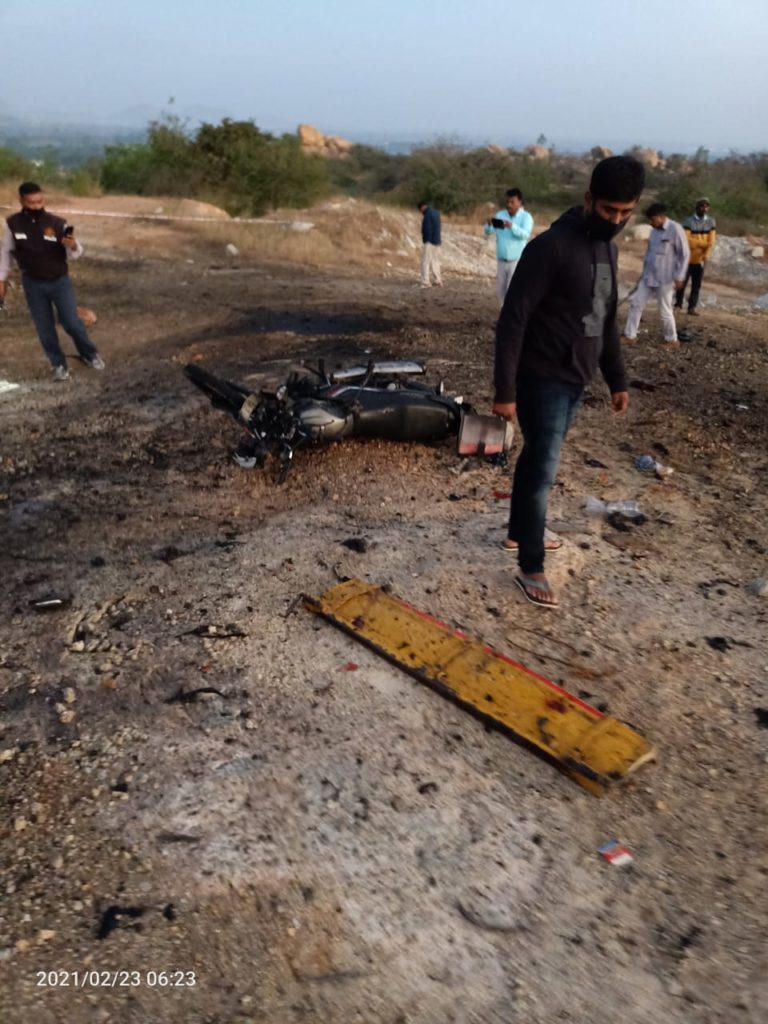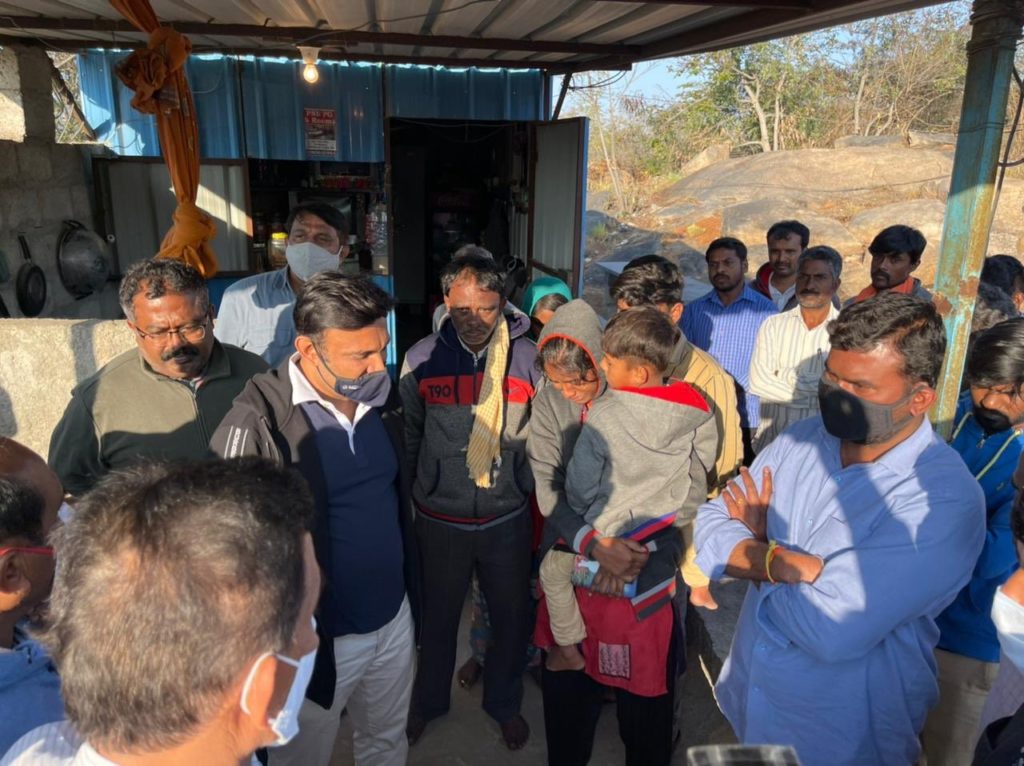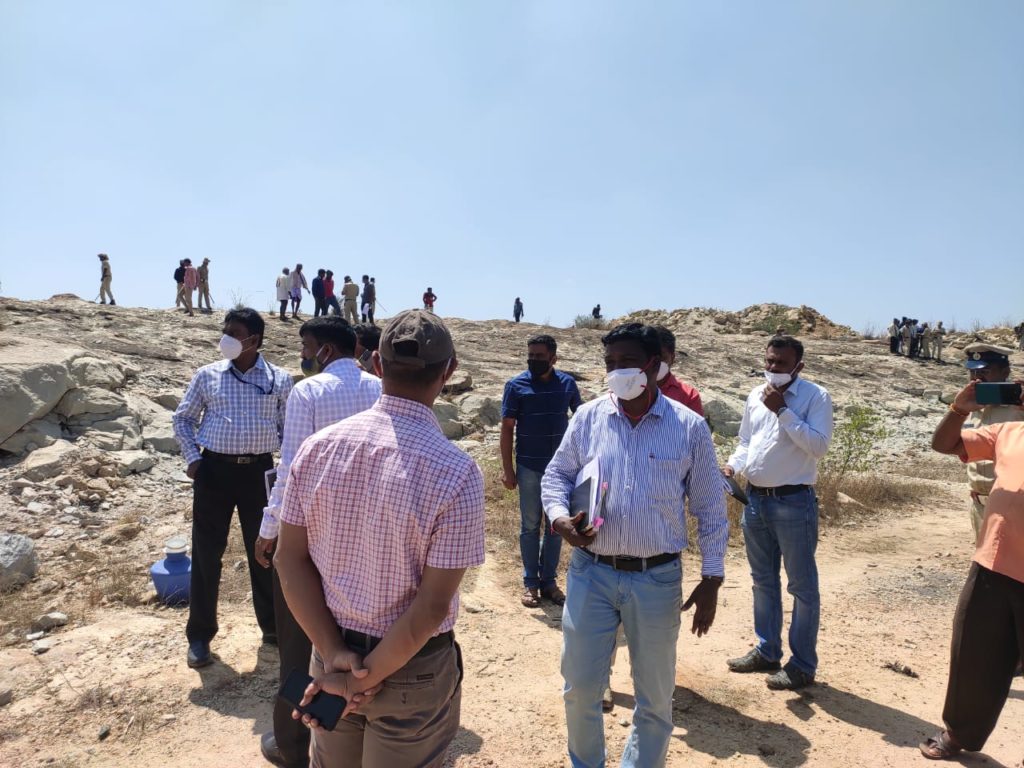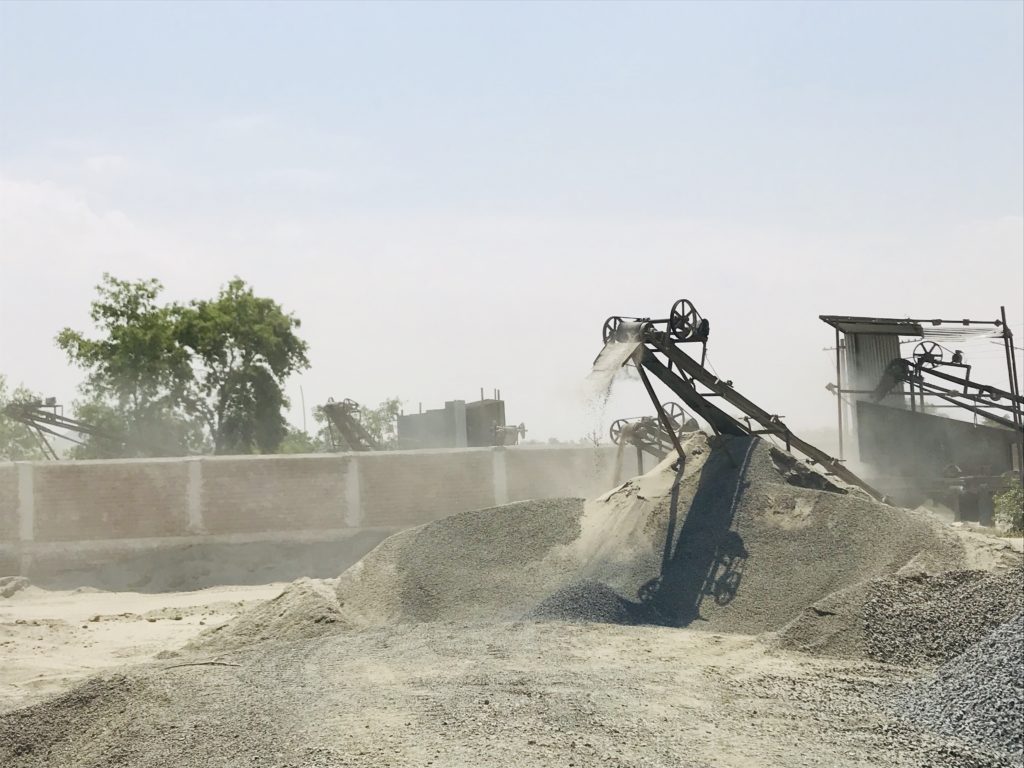Powder keg in Karnataka: The Chikkaballapur and Shivamogga gelatin blasts tip of the iceberg
In the space of a month, the two gelatin blasts related to stone quarrying in Karnataka have left 14 dead. Bengaluru’s insatiable appetite for construction is driving illegal quarrying in the state.


Bengaluru’s insatiable appetite for construction is driving illegal quarrying in the state. Pic: Karnataka.com (For representation purpose only)
Bengaluru, Karnataka
Three days ago, in the wee hours of February 23, a truck transporting gelatin sticks within a quarry in Hirenagavalli village of Karnataka’s Chikkaballapur district exploded, killing six labourers and grievously injuring one. As per news reports, the labourers were reportedly attempting to hide the explosives at the quarry, about 95 kilometres from state capital Bengaluru, in the wake of local authorities ramping up raids on illegal quarrying sites.
While the quarry is situated in Chikkaballapur, it falls within the jurisdiction of Gudibande district police. As per news reports, on February 24, police arrested GS Nagaraja, prime accused in the blast case, who also happens to be a BJP leader from Gudibande in Chikkaballapur. He was said to have been absconding since the blast, and was apprehended in Hosur, on the Tamil Nadu-Karnataka border.
Exactly a month back, on January 23, something similar happened in Abbalagere, a village eight km from the heart of Shivamogga district, about 205 km from Bengaluru. Eight workers died in a stone quarry. The blast reverberated even in the neighbouring districts of Chikkamagaluru and Uttara Kannada.

This incident in Shivamogga pressed the local police into action, which started conducting search operations. Environmentalists claim it is Bengaluru’s insatiable appetite for construction and demand for M-sand (manufactured sand, which is a substitute for river sand), which is driving illegal stone quarrying in the state.
“The police in Chikkaballapur had begun conducting surprise searches. The recent blast might have occurred due to gelatin sticks and detonators being stored in the same place during transportation,” KM Nanjundaswamy, senior geologist at the state department of mines and geology, told Gaon Connection. “Gelatin sticks and detonators should be stored separately,” said Nanjundaswamy, for even the slightest friction or change in temperature could trigger a blast.
In response to the two recent blasts related to stone quarrying in the state, the state home minister Basavaraj Bommai reportedly said that searches will soon be conducted in all mines and quarries and an audit conducted of explosives. This would be a joint operation by teams from the departments of Home and Mines and Geology, and would cover legal and illegal mines, he told mediapersons. The minister on Tuesday announced that the Crime Investigation Department (CID) would take over the case. The CID began investigation on Wednesday.
“Bengaluru’s unquenchable thirst for infrastructural development and the demands of an increasing population have depleted resources in rural Karnataka,” C Yatiraju, vice-president, Tumkur Science Centre, told Gaon Connection.

Fuelling Bengaluru’s incessant need for sand
As per news reports, there are about 2,033 legal quarries operated in Karnataka. A 2019 report by the Comptroller and Auditor General of India identified over 532 illegal quarries in Chikkaballapur alone, which amounted for “revenue implications” of Rs 223.25 crore, the report added. These 532 locations of illegal quarrying sites span over 1,145,000 square metres.
While Chikkaballapur has only 2.5 per cent of land mined for stone and minerals, it is responsible for fulfilling Bengaluru’s extensive demand for M-Sand for construction. “As a result, several miners and quarry owners have settled in the district and quarries and stone crushing sites have cropped up,” R Anjaneya Reddy from Chikkaballapur, told Gaon Connection. Last March, he petitioned against the Stone Crushers Amendment Ordinance, 2020.
Reddy attributed the region’s transformation into a quarry hotspot to its close proximity to Bengaluru, easy access to the highway and easily malleable political forces. “Today, thousands of tonnes of M-sand is being transported to Bengaluru, and I refuse to believe this is happening without the knowledge of the local authorities,” he said.

The central and state governments are committed to developing infrastructure in urban areas, but have failed to understand the impact on their rural counterparts, those working in the field say.
We should have cut down consumption when we replenished all natural sources of sand in the city, said Yatiraju. Speaking about Bengaluru’s shift to M-sand, he said the massive demand is borne by the mountains and hills in neighbouring districts. “While we can grow plants, we cannot possibly grow mountains,” he told Gaon Connection.
“Until profit-driven governments realise this, incidents like that in Shivamogga and Chikkaballapur will keep happening,” he added.

Unauthorised use of gelatin
Reddy alleged that to extract raw materials at a decreased production cost, quarry workers and miners have adopted unscientific methods of excavation and irresponsible use of explosives. While the use of gelatin is not illegal, its usage has to be approved by the department concerned and should be overseen by a licensed or certified blaster and manager of the mine.
Additionally, only a limited quantity of gelatin should be used for explosions. Explosions must be carried out during the day and in the presence of experienced professionals. In the Chikkaballapur case, unskilled labourers were tending to the explosives, Reddy said.
During this blasting process, there are several safety measures and guidelines that miners have to adhere to. Reddy said geologists, the state pollution control board, gram panchayats and also local police are tasked with ensuring this adherence to rules.
However, due process is not followed in Chikkaballapur, which makes it a conducive ground for illegal mining, he added.
Gaon Connection made multiple efforts to contact police officials at the Gudibande police station, but they were unavailable for comment.

(Il)legal front
The definition of mining under the Mines & Minerals (Development & Regulation) Act, 1957, includes any operations undertaken for the purpose of extraction of minerals. Talking about the legal angle, Mukta Joshi, legal research associate at Land Conflict Watch, told Gaon Connection that illegal mining entails activities being carried out without a license or with an expired one, being carried outside the demarcated area mentioned in the license and violations of environmental clearances.
The usage of explosives is regulated by the Explosives Act, 1884 which prohibits their manufacture, possession or transport without a license. “In this case, the workers were asked to transport explosives for which the miner did not have a licence,” said Joshi. In addition, they were doing this without wearing any safety equipment.
Does this constitute a human rights violation? “The appointment of a safety committee to carry out regular inspections and make recommendations for safe working conditions is mandatory; but isn’t always adhered to,” said Joshi.
Reddy advocated strict restrictions against unscientific procurement of raw material in quarries. He said that mere possession of a license did not make them legal miners. “The absence of prescribed safety measures, failure to contain dust, absence of a compound wall and unscientific extraction of raw materials amount to illegal mining,” he told Gaon Connection.
“Almost all quarries in the district violate one rule or the other, making them less-than-legal. These cause accidents,” claimed Reddy.
87% of Mandya’s quarries illegal
What happened in Chikkaballapur and Shivamogga is just the tip of the iceberg when it comes to Karnataka’s long-drawn history of illegal quarrying. While the Reddy brothers remain infamous for illegal mining in the state, the problem runs much deeper than a handful of corrupt officials.
Kannada newspaper Kannada Prabha compiled an exhaustive list of districts where illegal mining thrives. Mandya ranked the highest, with 87.18 per cent of its quarries functioning illegally – only 147 have licenses.
In Dakshina Kannada, Udupi and Hassan districts, this percentage of illegal quarries is 85, 64.51 and 61.5 respectively.
While Mandya houses more than a thousand mines and quarries, the other districts have just a few hundreds each. Shivamogga, Koppala and Bidar also feature in the list of districts with high rates of illegal mining.
SR Hiremath, 76, environmentalist and anti-corruption activist known for his relentless fight against the mining mafia in Karnataka, claimed the government and mining industry in the state were close-knit. According to him, the mining scams in Ballari and Chitradurga took place with the connivance of the governments that ruled the state – then and now.

Bengaluru’s vast ecological footprint
Violation of prescribed quarrying norms hurts local villagers the most. Hiremath told Gaon Connection that mining had left a lasting impact on agriculture, animal husbandry and horticulture, and ruined livelihoods dependent on these activities.
“The dust emerging from these sites is extremely harmful for biodiversity as well as agricultural crops; as it stops photosynthesis from taking place. This also exerts pressure on groundwater, which is dangerous for a drought-prone area like Chikkaballapur,” said Reddy. “The local people are powerless against these mining barons, as their complaints are violently suppressed with the threat of muscle power,” he added.
Apart from the glaring environmental degradation, news reports state that mining and quarrying activities have also caused cultural erosion. The explosions threaten to destroy the precariously perched ruins of Hampi, 330 km from Chikkaballapur, dating back to the 14th century. The stone quarry nearest to the Hampi ruins is 15 km away.
Meanwhile, in the state capital, construction continues to boom and the demand is unceasing. The hinterland, as always, pays the price – losing livelihoods, natural resources, heritage structures and precious lives.

